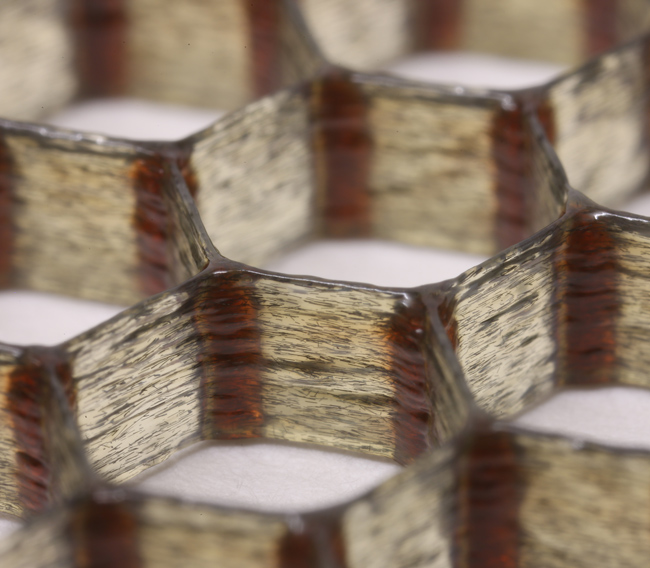
In wind farms across North America and Europe, sleek turbines equipped with state-of-the-art technology convert wind energy into electric power. But tucked inside the blades of these feats of modern engineering is a decidedly low-tech core material: balsa wood.
Like other manufactured products that use sandwich panel construction to achieve a combination of light weight and strength, turbine blades contain carefully arrayed strips of balsa wood from Ecuador, which provides 95 percent of the world’s supply.
For centuries, the fast-growing balsa tree has been prized for its light weight and stiffness relative to density. But balsa wood is expensive and natural variations in the grain can be an impediment to achieving the increasingly precise performance requirements of turbine blades and other sophisticated applications.
As turbine makers produce ever-larger blades—the longest now measure 75 meters, almost matching the wingspan of an Airbus A380 jetliner—they must be engineered to operate virtually maintenance-free for decades. In order to meet more demanding specifications for precision, weight, and quality consistency, manufacturers are searching for new sandwich construction material options.
Now, using a cocktail of fiber-reinforced epoxy-based thermosetting resins and 3D extrusion printing techniques, materials scientists at the Harvard School of Engineering and Applied Sciences (SEAS) and the Wyss Institute for Biologically Inspired Engineering have developed cellular composite materials of unprecedented light weight and stiffness. Because of their mechanical properties and the fine-scale control of fabrication (see video), the researchers say these new materials mimic and improve on balsa, and even the best commercial 3D-printed polymers and polymer composites available.
Read more at ENGINEERING.com

